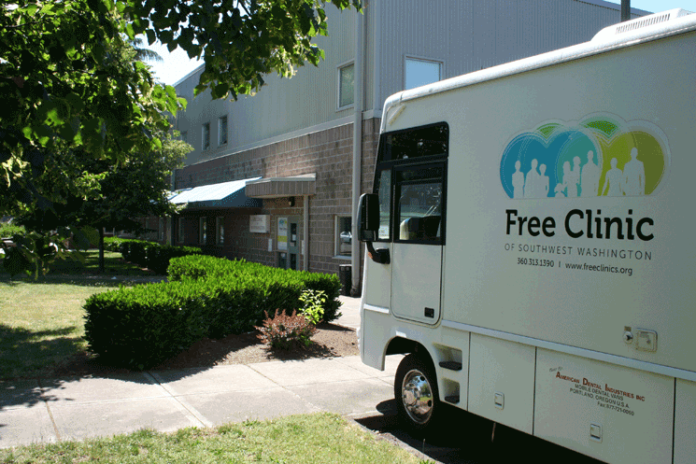27 years ago, the Free Clinic of Southwest Washington was established to address the healthcare needs of uninsured and under-served residents in our community. And while the healthcare landscape has changed over the years, the Free Clinic’s commitment to serving those in need has not.
We spoke with Barbe West, executive director of the clinic, about the ongoing challenge of providing services, and expectations for the future.
Q: How do you anticipate things changing given the policies that are being proposed in Washington D.C. right now?
West: From the perspective of the Free Clinic, what we’ve decided to do is wait and see. What we do at the Free Clinic is provide care for the uninsured as well as the under insured. That category for us – the under insured – is those people who actually have health insurance, but their co-pays and deductibles are so high they can’t afford to pay them. So we’ve been following that particular group of patients for about two years now, as premiums have risen.
We don’t want to see more people become uninsured, but the flipside is prior to the ACA going into effect in January of 2014, we were seeing about 30 percent more patients than we are seeing today. So if worst-case scenario [happens] and more people [lose] their health insurance, we know we can absorb that volume because we were doing it before. We can do that again, it’s just not what we would prefer to do.
Q: Will staffing levels at the Free Clinic change if you need to absorb a higher volume of patients?
West: All of our care and services are provided by volunteers. We have eight paid staff and we have 500 volunteers, so if our volume went up, we would just recruit more volunteers… We’re really fortunate in that we have this great group of people who love to come and volunteer here. We just trust that we could increase the number of hours that we needed to accommodate whatever the demand was.
Q: Help us get to know the people you serve. What are the demographics of Free Clinic patients?
West: We have about 50/50 in terms of male and female, 59 percent of our patients are Hispanic, in terms of ethnicity, and 24 percent are white. The rest of our patients are in other ethnicities. In terms of the age range, the majority of our patients fall between the ages of 30 and 59.
70 percent of our patients have their own transportation; sometimes people think everyone comes here on the bus, but that’s not true.
Q: Are most of your patients employed?
West: Many of our patients are employed (about 45 percent), but they’re employed with small employers who don’t offer health insurance. So their employees end up coming to us for care, which is why we’re here. The flip-side is that in terms of the business community, some of the larger businesses are very supportive of us in terms of financial support.
Where we’re not well connected is with those small employers who may not realize where their employees are going for their healthcare. We were just talking about that this morning, about how we [can] get more connected with small employers … to help them understand that we are taking care of their employees. Maybe there’s a way they could give back to us too. And we are a member of the Chamber (Greater Vancouver Chamber of Commerce), so we try to work with them in terms of staying connected.
Q: What can the business community do to better support the Free Clinic?
West: Well, obviously, if they provided their employees health insurance, but I also know as a small employer that’s really hard to do. We have eight employees, so we’re a small employer and our health insurance premiums are very hefty. Because we’re a healthcare provider, our board says we must provide that for our employees, but there’s a cost to that.
I think the primary request would be: know that we’re here for your employees if you don’t provide health insurance, and then think about how we can partner more. Do you have employees that could volunteer here as a way to give back? Or maybe it’s small employers doing a fundraiser.
I’ll give you an example: I was out talking to a smaller employer about six weeks ago and what came out of that was two employees saying, “We’ve got spouses that could volunteer at your clinic and do interpreting for you.” And I’m like, wow – this was worth the visit. And those two spouses are onboard and signed up as volunteers. So it’s finding those ways to connect dots.




